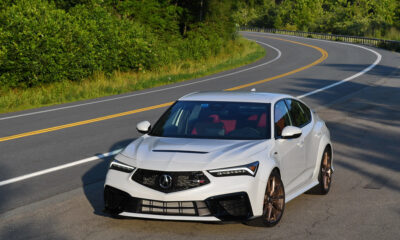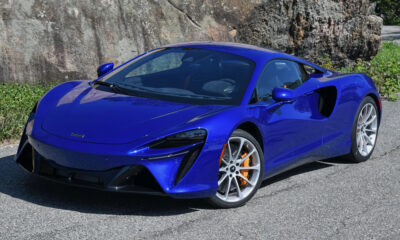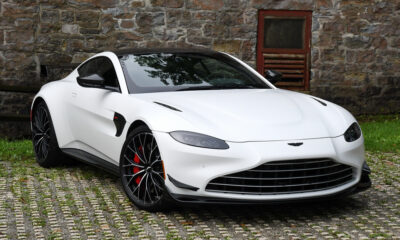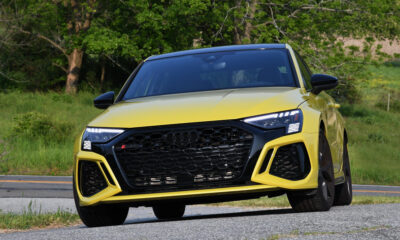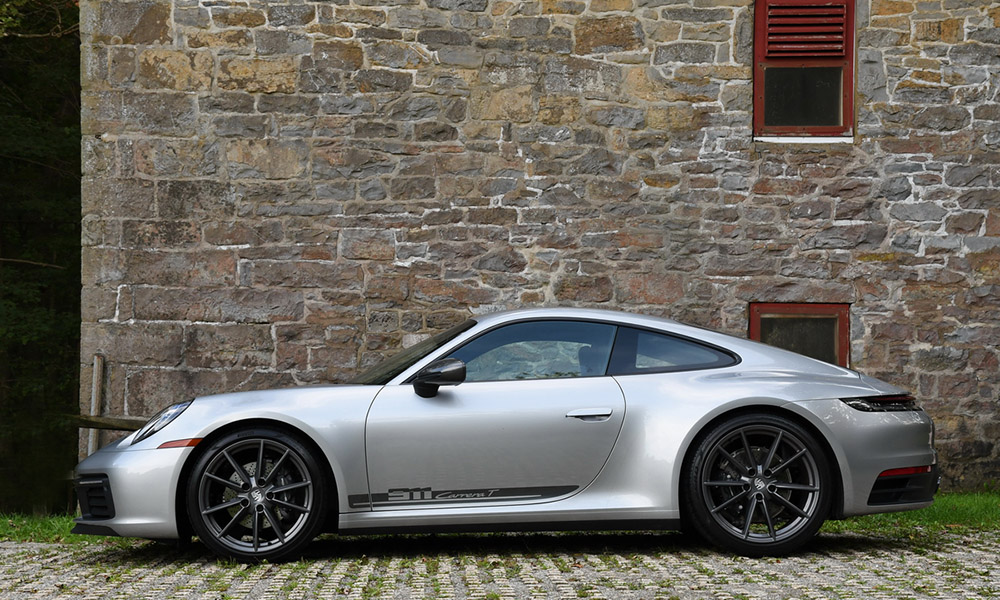
Photo: David Haueter
It’s been almost sixty years since Porsche first started selling the 911 and it remains the definitive Porsche in the model lineup, even after decades of evolution and the presence of the mid-engined 718 models, which will soon be all-electric.
There’s a lot of 911 models to choose from (including a hybrid coming soon), but one of the best pure drivers’ cars may reside toward the bottom end of the lineup with the 911 Carrera T.
The 911 Carrera T is just above the base model 911 Carrera in the model hierarchy. It shares the same twin-turbocharged six-cylinder engine as the base model as well as the same brakes but blends in some of the features of the more expensive and performance-oriented 911 Carrera S and sheds some weight to make it unique.
Specifically, the 911 Carrera T offers the choice of a seven-speed manual or eight-speed automatic transmission, while the base model Carrera only comes with the automatic.
The 911 Carrera T also comes standard with the mechanical limited slip differential and Porsche Torque Vectoring (PVT) that is standard on the 911 Carrera S but not available on the base model Carrera.
Additionally, the 911 Carrera T comes with the Sport Chrono Package and PASM sport suspension that also lowers ride height by 10mm. PASM is optional on the 911 Carrera S but is not available on the base model.
Also available on the 911 Carrera T as an option is rear axle steering, which is not available on the base model. The sport exhaust with gloss-black tailpipes is also standard on the T.
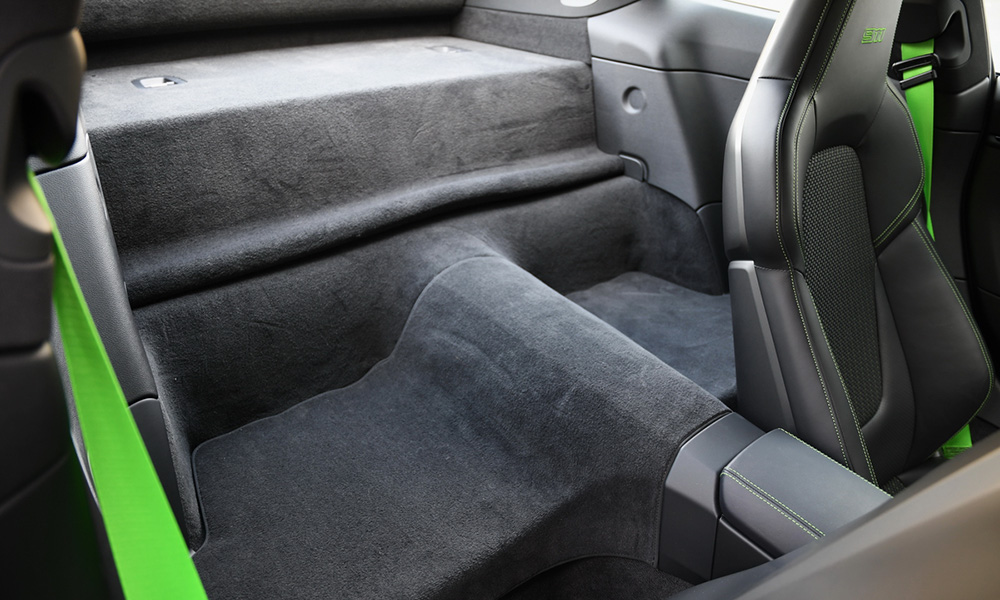
Photo: David Haueter
In terms of weight reduction, Porsche has made changes to the 911 Carrera T that they say results in a drop of 100 pounds compared to the base model.
The most obvious of those is the deletion of the rear seat, which is now just an open storage area covered with carpet, but the seat can be added back in as an option if you really want it. Porsche also took out some sound deadening materials, put in a smaller and lighter battery, and thinner window glass.
There are some other details about this 911 that are worth mentioning. Cars in this price range don’t typically have cloth seats, but this one had cloth centers (what Porsche calls “Sport-Tex”) with leather on the bolsters.
The seats looked great in this car with their green stitching (though I could do without the Lizard Green seat belts), and the cloth that’s used feels like it will last for decades. You can still order the 911 Carrera T with all-leather seats if you prefer.
The cockpit is well laid out and designed, and I give credit to Porsche for sticking with manual toggle switches for the climate controls. They even kept an analog tachometer rather than making it a digital display (though the rest of the gauges are digital).
The model I tested came without the rear seat but had the optional automatic transmission, which adds around 84 pounds compared to the manual model (3,338 pounds vs. 3,254 pounds).
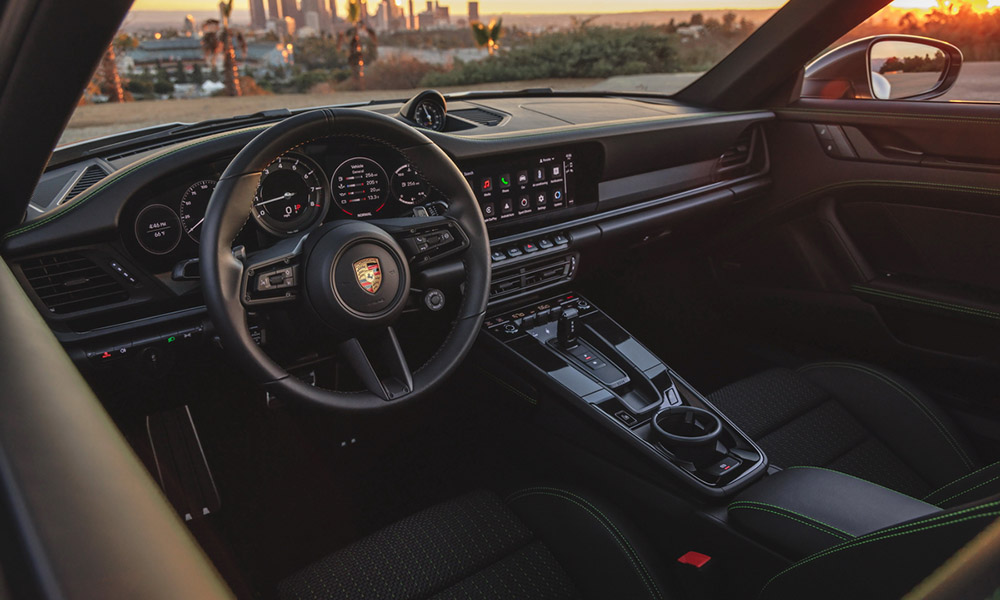
Photo: Porsche
Adding options, of course, will add weight back in, but the weight-saving measures in this car bring other benefits that have nothing to do with acceleration times or handling prowess.
The greatest advantage of no rear seat is having more usable storage space, especially since the seats weren’t much good for humans anyway. It would be nice if the seats moved forward automatically when you pull the seat back forward, which would give easier access.
Another benefit of the weight reduction is that you hear and feel the car more, which is a good thing in a car that’s made to excite you.
With less sound deadening and thinner glass, you hear the engine more, which gives the driver more of a connection with the car.
It’s louder when cruising on the highway as well, but it’s worth the tradeoff for the added aural stimulation you get when working through the gears on a favorite stretch of road.
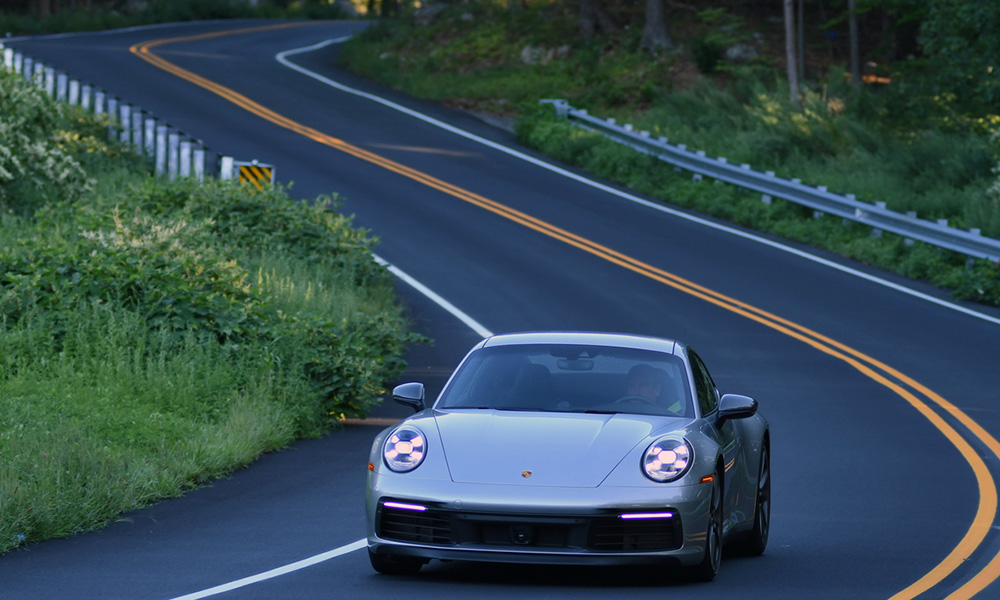
Photo: David Haueter
Speaking of driving on the highway, another worthwhile option on this car is the extended range 23.7-gallon fuel tank, which holds 6.8 gallons more than the standard tank and extends highway range to around 570 miles (based on the 24 mpg highway average).
It’s well worth the $230 extra, especially if you don’t like stopping to get gas or plan to take the car on long trips.
Porsche sells 911 models that produce up to 640 horsepower, but the engine in the base model 911 Carrera and 911 T models is no slouch.
The three-liter turbocharged unit produces 379 horsepower and 331 foot-pounds of torque and can take the 911 Carrera T with the PDK automatic transmission to 60mph in 3.8 seconds (4.3 seconds with the manual).
Most Porsche buyers aren’t thinking about fuel mileage as a priority, but an added benefit of the base engine is that it delivers 24 mpg on the highway.
The 911 Carrera T blends the performance of the engine into a package that is very satisfying to drive. The tactile responses with the steering, handling responsiveness and braking are spot-on, yet the ride quality remains compliant enough to drive every day.
This car loves to power out of corners and can carry significant speed through the apex of corners, but you also never feel like the car is too much for you, which makes it a great choice for a car that’s going to be driven mostly on public roads.
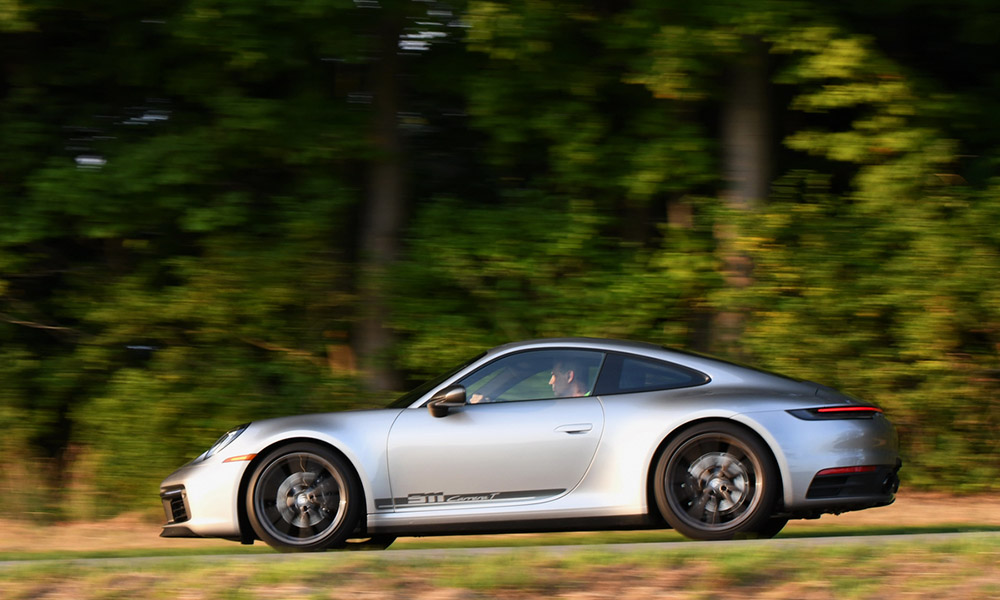
Photo: Ingrid Kretschmann
Choosing the manual transmission should raise the driver involvement level even higher, but there’s not much to fault with the PDK automatic, which is very responsive and faster if you’re just looking at the numbers.
Still, I would go for the manual if I were buying one, especially since the pairing of a manual transmission with a great internal combustion engine may have a very limited future.
The 911 Carrera T pricing starts at $124,900, which is around $10,500 more than the base model 911 Carrera.
For the added features the T has along with the greater driver involvement and dynamics that you get with the weight reduction, it seems like a pretty good value in the 911 lineup.



















